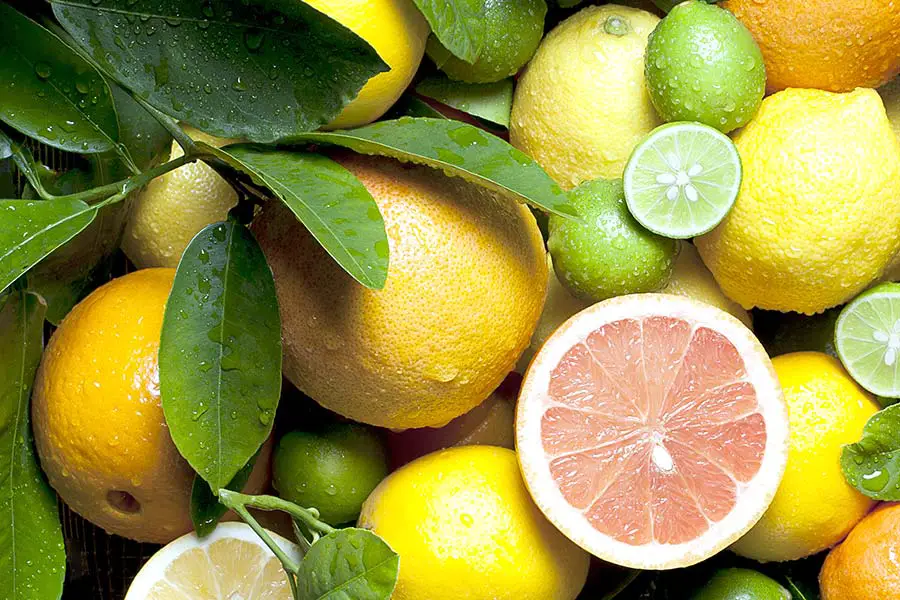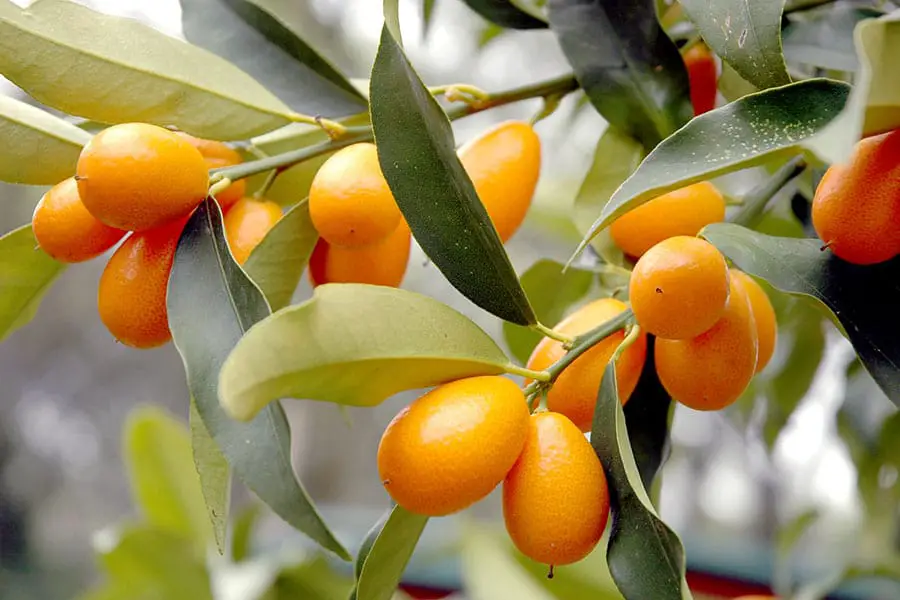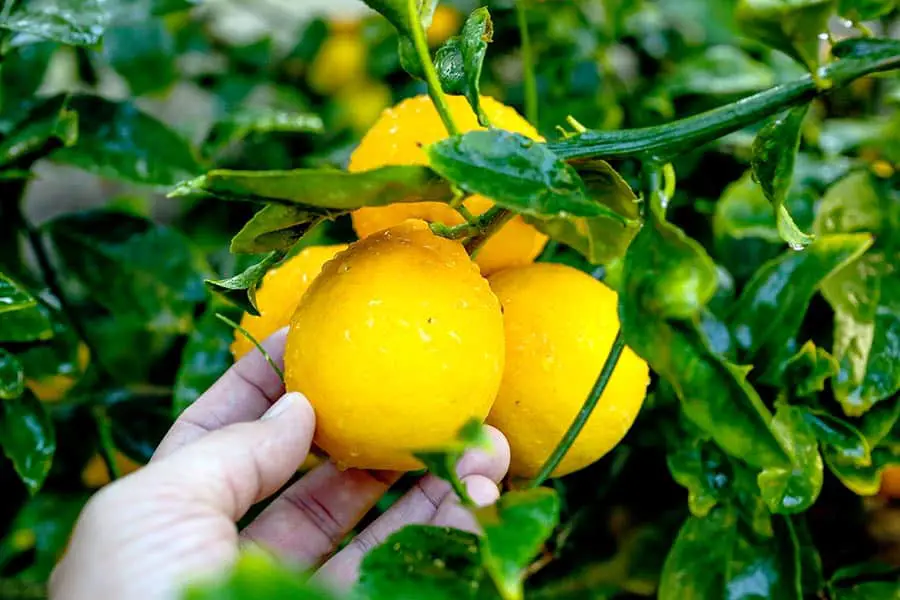
The State of California is an agriculture powerhouse that produces a large number of fruits and vegetables each year. Most notable are the various types of citrus fruits grown there, including oranges, lemons, limes, and grapefruits. California is vast and has many different climates. This begs the question, does citrus grow in the Bay Area?
You can grow citrus in the Bay Area. While most types of citrus can be grown around San Francisco, the cooler climate requires that citrus trees receive additional care than in warmer climates. A handful of citrus varieties such as lemons and limes perform especially well in the Bay Area.
Growing citrus and having a year-round supply of delicious fruit is relatively easy if you know what you are doing. In this post, we will cover the most durable types of citrus trees to grow in the Bay Area, when to plant them, and how to protect them from the elements.
What Citrus Grows in the Bay Area
While California is known for its abundance of citrus fruits, you should be cautious when selecting which type to grow in the San Francisco Bay Area. This is because citrus generally requires a lot of warmth and sunshine. The reason is that citrus trees use the photosynthesis process to convert sunlight into sugars which make the fruit sweet.
Given that the Bay Area temperatures are a bit cooler than other parts of the state and frequent fog can block out the sun, you want to make sure that the trees you select to plant can handle the climate. Fortunately, several citrus varieties can grow well in and around San Francisco.
Lemons
Lemons are one of the most popular citrus fruits that are grown in the Bay Area. They are resistant to cooler temperatures and are relatively easy to grow and care for. Most horticulturists recommend either the Meyer or Dwarf Eureka varieties.
Meyer lemons require more space as the trees can grow up to 10-15 feet tall. They can be planted in a pot while they are young trees but will eventually need to be transferred to the ground. Their skin is fragile, which makes them susceptible to bruising. For this reason, you rarely find these on grocery store shelves. Many people claim that Meyer lemons have a better taste than most store-bought lemons.
Dwarf Eureka lemons can be planted in a pot or in the ground. If potted, they can grow up to 8-10 feet tall, but they can be pruned to maintain a smaller size. This feature makes it an excellent option for people who only have a small space to grow a tree. Despite its name and tree size, Dwarf Eureka lemon trees produce normal-sized fruit.
Most lemon trees require 4 to 8 hours of sunlight every day. If the plant is potted indoors, place it near a south-facing window and rotate every week so that both sides of the tree get equal amounts of sunlight. Citrus trees are notoriously touchy when it comes to water. You want to ensure that you get the water deep enough into the soil to soak all the roots, but not too much water that the ground is completely saturated. Overwatered trees will die.
Limes
Like lemons, limes are among the most cold-resistant of the citrus family. There are many varieties of limes, but the best for the Bay Area will be Bearss (pronounced “beers”) and Mexican limes (which include Key Limes). Of the two, Bearss has a slight advantage as they can withstand a little more cold than Mexican limes. They are also seedless and have fewer thorns.
The great thing about limes is that they can be grown in both the ground and in a container. There are also several dwarf versions for people who have limited space.
Lime trees require 6 to 8 hours of sunlight each day. Like lemons, you should have soil that drains well so that water can penetrate deeper into the ground but not drown the tree with too much water saturation.
Kumquat

Kumquats are an interesting citrus fruit. They look like tiny oranges (about the size of a grape), but they are sour (almost like a lemon or lime). Unlike most citrus, they have a thin edible peel.
Kumquat trees can be planted in the ground or potted. However, kumquat trees are susceptible to root disease from too much water or lack of proper drainage. If you plan to put a kumquat tree in a pot, make sure it is large enough to promote healthy root growth and expansion.
Insects like to feast on the kumquat tree, so you may need to use some insecticide or other natural deterrents to prevent damage. Kumquats also need a little more protection from frost than limes or lemons.
Bay Area Answers Fun Fact: Most people know limes for being green in color. Ripe limes are actually a pale yellow. Commercial growers pick them when they are green, so they don’t spoil before arriving at the supermarket.
Grapefruit
Grapefruits are good candidates for the cooler temperatures of the Bay Area. While they can be planted in a pot when they are young, they will eventually need to be transferred to the ground. A mature grapefruit tree can reach 25 feet tall, but some can get as big as 40 feet. You’ll need to make sure that you plant the tree far enough from buildings or other structures to allow the tree to reach full size.
Grapefruit trees require 6 to 8 hours of sunlight a day. Your tree will need watered one to three times a week during the first year or so. After that, you can reduce watering to once a week (more often during summer heatwaves).
Other Posts of Interest
- What Is The Best Type Of Lawn Grass For The Bay Area? (When Should You Plant)
- Why Is San Francisco So Foggy?
- Is San Francisco An Island Or A Peninsula?
- What Is Treasure Island Used For Today?
Best Times to Plant Citrus Trees
Spring is the best time of year to plant any type of citrus tree in the Bay Area. This is early enough that the tree can establish strong roots before the summer heat, but not too early that you risk the tree dying from frost.

Bay Area Microclimates
One of the unique characteristics of San Francisco and the Bay Area is the climate. While most people think of sunshine when it comes to California, many visitors are surprised by how cool it can get some days, even in the summer. The City of San Francisco is known for being a host of many “microclimates.” It’s common to be in a cool, foggy part of the city one minute and sweating in the sun a few blocks away.
Part of what drives this phenomenon is the geographic location and features of the landscape. For example, the cold water of the Pacific Ocean and San Francisco Bay creates a milder climate, but hills, mountains, and even man-made structures (like skyscrapers) can disrupt this cool air creating pockets of varying weather and climate patterns.
For this reason, it’s important to understand the specific weather and climate in your neighborhood before selecting the right citrus tree for your home.

How to Protect Citrus Trees from Frost
Citrus trees originated in warmer climates from Asia. While most can withstand the cooler temperatures of the Bay Area, there is a risk of damage from frost if the temperature drops too low. According to the USDA Hardiness Zone rankings, the San Francisco area is in Zone 10 (with average extreme minimum temperatures reaching 30-40 degrees).
Mature trees are usually more durable against cold temperatures, so it’s critical that you carefully monitor and protect young trees.
- Water the ground around the tree – This may seem counterintuitive, but trees that are starved of water will freeze more quickly. The reason is that moist soil will absorb and hold heat from the sun during the day. Doing this helps to keep the roots warmer.
- Wrap the trunk of your tree – Tree trunks can be wrapped with a variety of materials to protect them from frost, including burlap, bubble wrap, blankets, or cardboard. If your tree is small enough, you can cover the entire tree or construct a small shelter to go over it.
- Hanging Incandescent Lights – Because the temperatures in the San Francisco area don’t drop very far below freezing, a few additional degrees can mean the difference between life or death. Hanging incandescent lights on your tree (like Christmas lights) can generate small amounts of heat (up to 4 degrees) to keep the frost away.
- Move Your Tree Inside – Some citrus trees are small, or a dwarf variety and can be planted in a large pot. Growing them in a pot makes it easy to transport them inside if the forecast calls for subfreezing temperatures.
Are Citrus Trees Native to California?
Despite the millions of citrus trees that dot the California landscape today, citrus fruit is not native to the State of California. Citrus was first brought to California by the Spanish missionaries in the mid-18th century. However, the first recorded citrus orchard was at the San Gabriel Mission, just east of modern-day Los Angeles, in 1804.
Prior to the California Gold Rush, most citrus cultivation was done by the missionaries. However, the fruits became a commercial commodity in the Bay Area, and citrus became popular with the gold miners. Later, the construction of the Transcontinental railway allowed California producers to ship their citrus harvests to the East Coast, boosting the demand.
With the invention of refrigeration shipping containers in the late 19th century, California began to export citrus fruits all over the world.
Pick the Right Tree for Your Property
Because of the variation in climate across the San Francisco Bay Area, it’s critical that you properly evaluate the weather and temperature in order to pick the right tree. Consider things like sunlight, availability of water, and space.
If you need help, you should stop by a local nursery to chat with an expert. They’ll be able to guide you on exactly what type of citrus you should consider for your situation.





